“Before inventing a container, how did people transport goods?” Have you ever thought of this if you are in the shipping field?
Before containers were introduced to the world, break-bulk shipping was the common method of transporting goods. Items were loaded and unloaded piece by piece using pallets, wooden crates, pottery jars, metal barrels, and boxes. It was a slow, costly, and risky process. Cargo was often damaged, stolen, or delayed.
The invention of the shipping container changed the way goods move around the world. It made global transport faster, safer, and cheaper. But not all containers are the same. Each type has a special purpose. It depends on the kind of cargo it carries.
In this article, you’ll learn about the most common types of containers used in shipping, how they work, and why they are so important for global logistics.
What Is a Shipping Container?
A shipping container is a large, rectangular steel box used to transport goods by sea, road, or rail. These containers protect cargo from damage, theft, and weather. They are built to handle rough ocean conditions, heavy lifting, and long journeys.
The most common container sizes are
- 20-foot container (TEU) – Twenty-foot Equivalent Unit
- 40-foot container (FEU) – Forty-foot Equivalent Unit
All containers used for international trade must meet ISO (International Organization for Standardization) standards. These standards ensure that containers can fit perfectly on ships, trucks, and rail wagons around the world.
10 Common Types of Shipping Containers
Different types of goods need different kinds of containers. Below are the most widely used containers and how each one works in global logistics.
1. Dry Storage Container
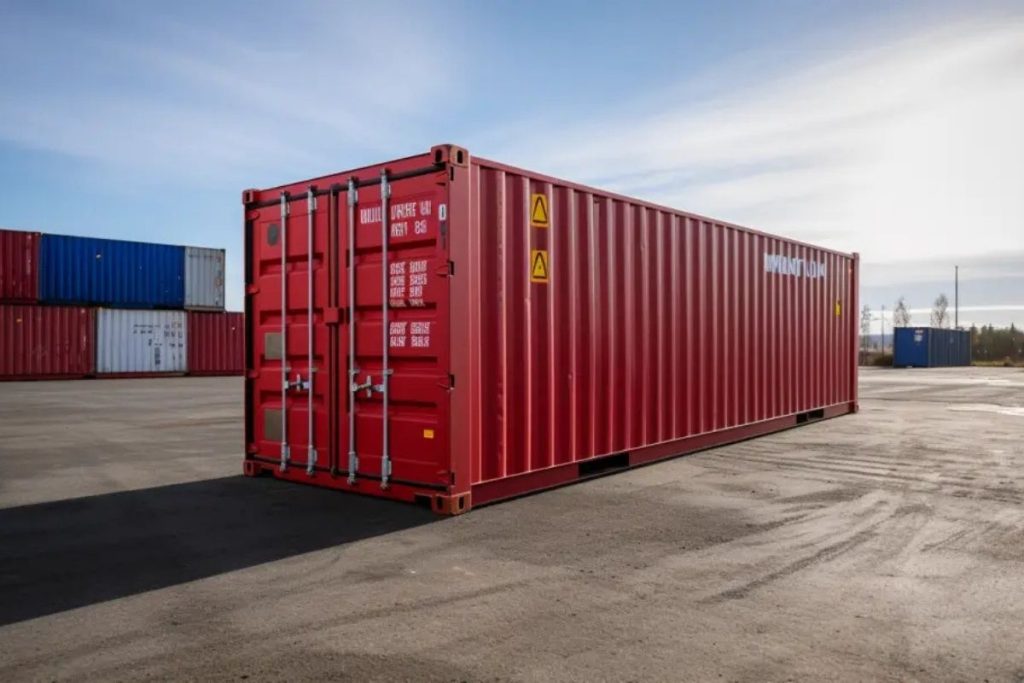
Dry storage containers are the most common type in shipping. These containers transport general cargo such as clothes, electronics, furniture, and machinery parts. These containers are fully enclosed and weatherproof, keeping goods safe from rain and sea air.
They come mainly in 20 ft, 40 ft, and 45 ft sizes. About 90% of goods shipped worldwide are carried in dry containers
2. Refrigerated Container (Reefer)
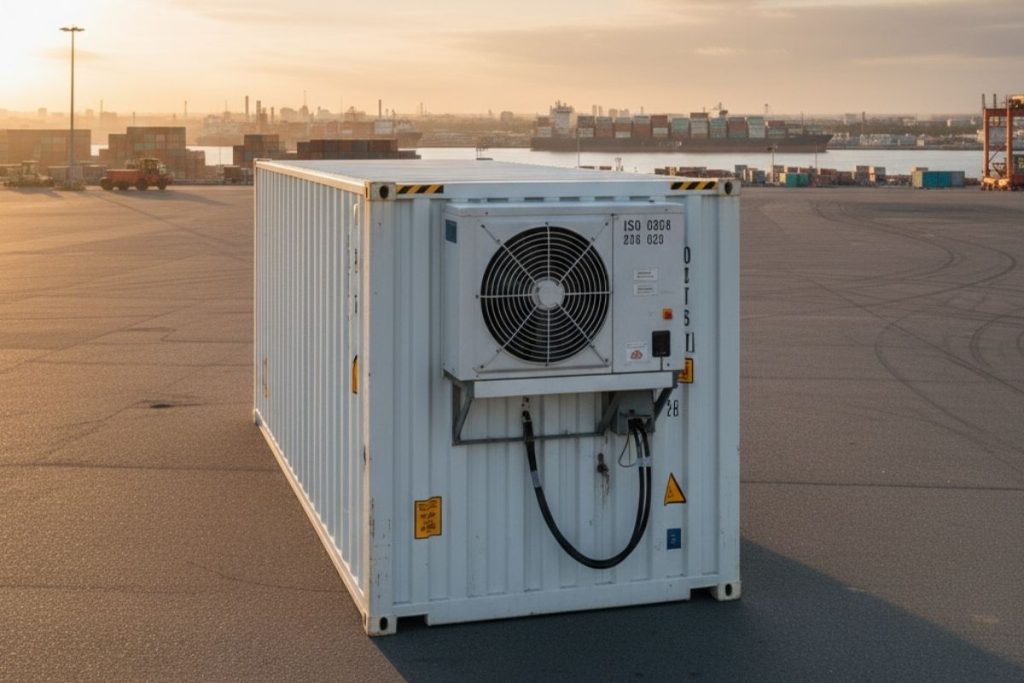
People use reefer containers for goods that need temperature control, such as fruits, vegetables, meat, dairy products, and medicines. They have a built-in cooling system that maintains a set temperature throughout the journey. These containers connect to a power supply on ships or at terminals to keep the temperature constant. Maintaining the cold chain is very important to prevent goods from spoiling.
3. Open Top Container
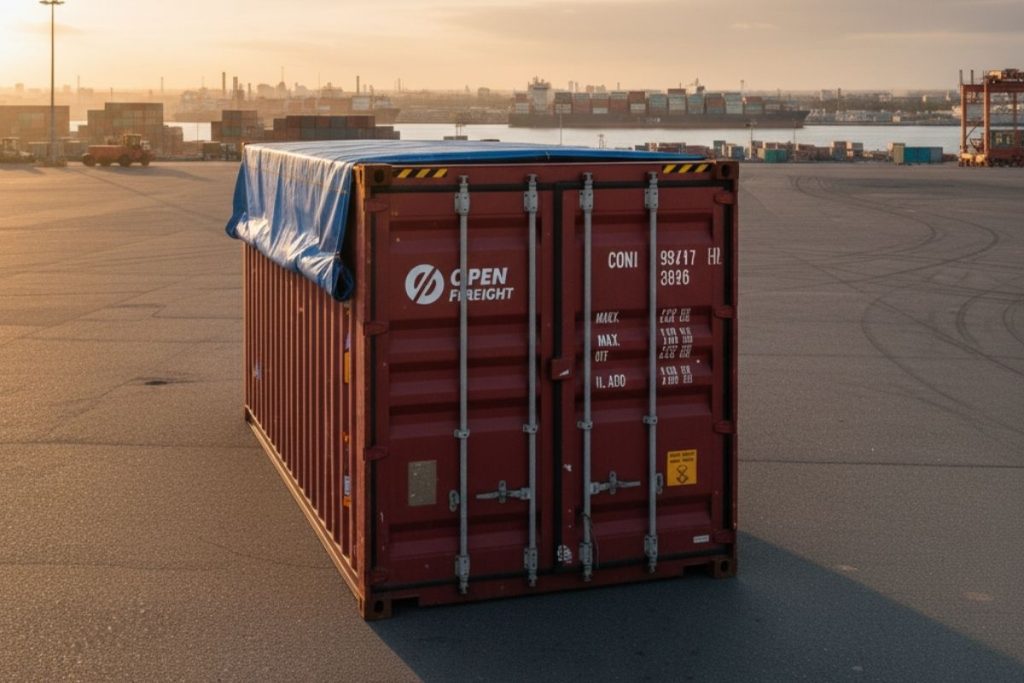
An open-top container does not have a solid roof. Instead, it has a removable tarpaulin or canvas cover. This design allows cranes to load oversized cargo like machinery, pipes, and heavy equipment that cannot fit through normal doors. After loading, people cover the cargo with a strong waterproof sheet to protect it during transport.
4. Flat Rack Container
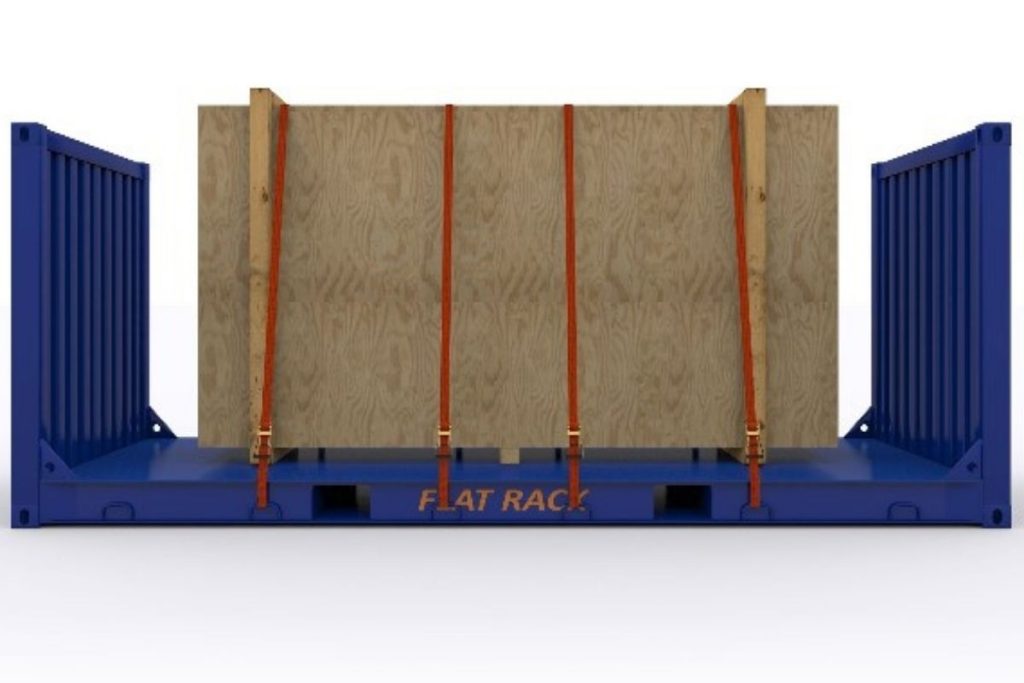
Flat rack containers have no side walls and sometimes no end walls. Industry uses them to carry heavy or wide cargo, such as construction equipment, vehicles, boats, or large industrial parts. Some flat racks have collapsible sides, allowing more flexibility when loading. This type is perfect for goods that cannot fit into a standard container.
5. Tank Container
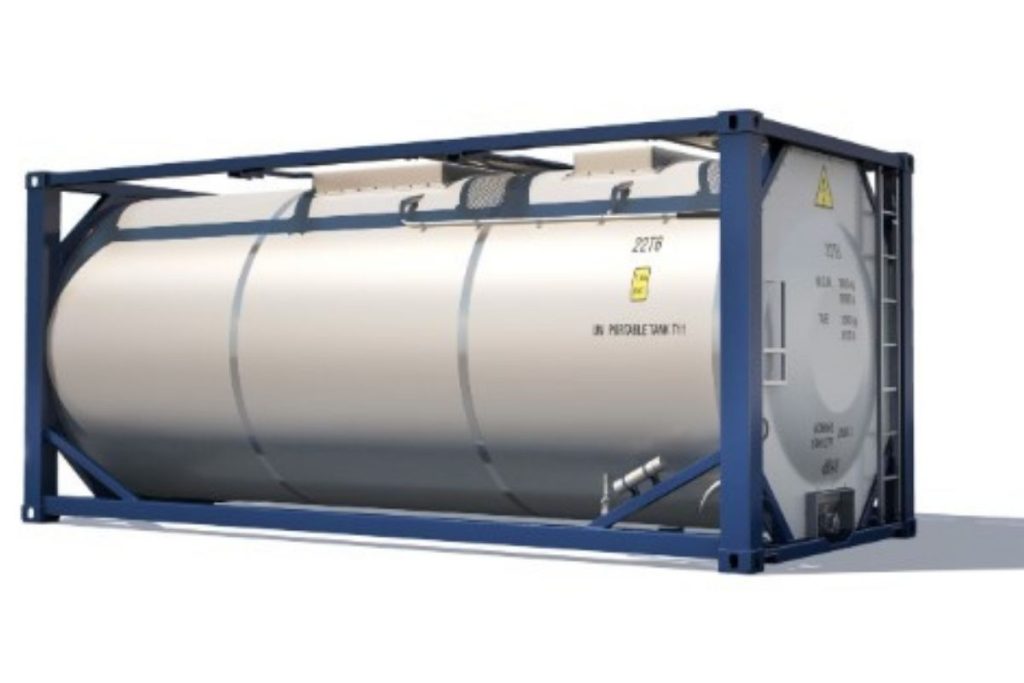
People use tank containers (or ISO tanks) to carry liquid cargo, including chemicals, oil, wine, or food-grade liquids. The tank is made of stainless steel and sits inside a protective steel frame.
People build these containers following safety standards to prevent leaks or contamination. They can handle both hazardous and non-hazardous liquids.
6. High Cube Container
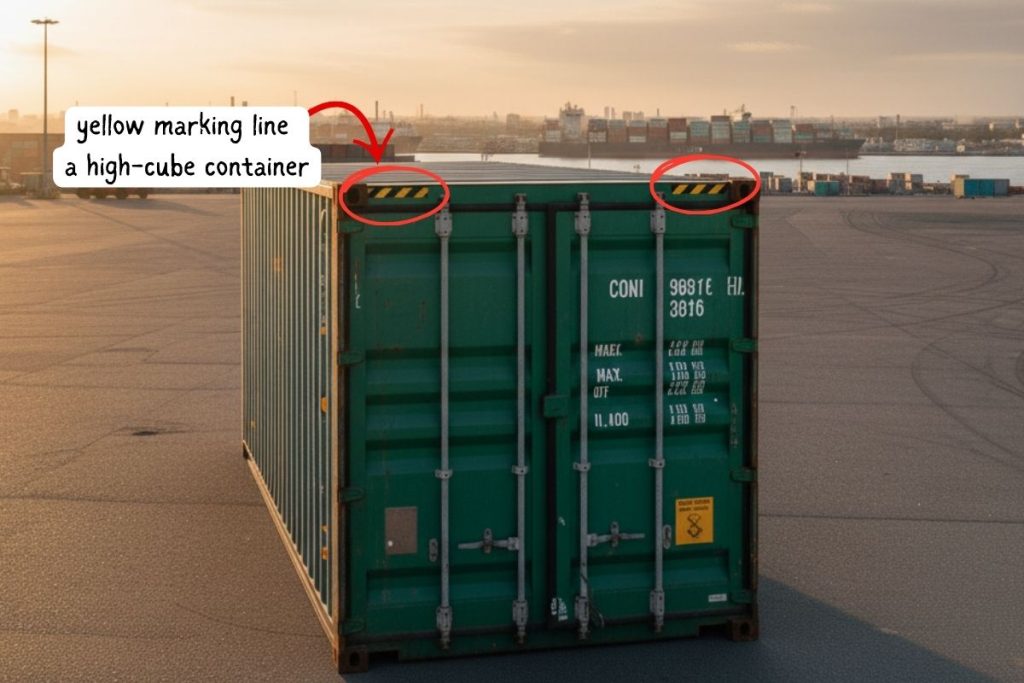
High cube containers look like standard dry containers but are one foot taller. The extra height provides about 10% more volume. It provides extra space for lightweight but bulky cargo, such as furniture, cotton, or large equipment.
High cube containers are more common in the garment industry. You can easily recognize them by the yellow marking line near the top corner. High cube containers are popular for goods that don’t weigh much but require more space.
7. Insulated Container
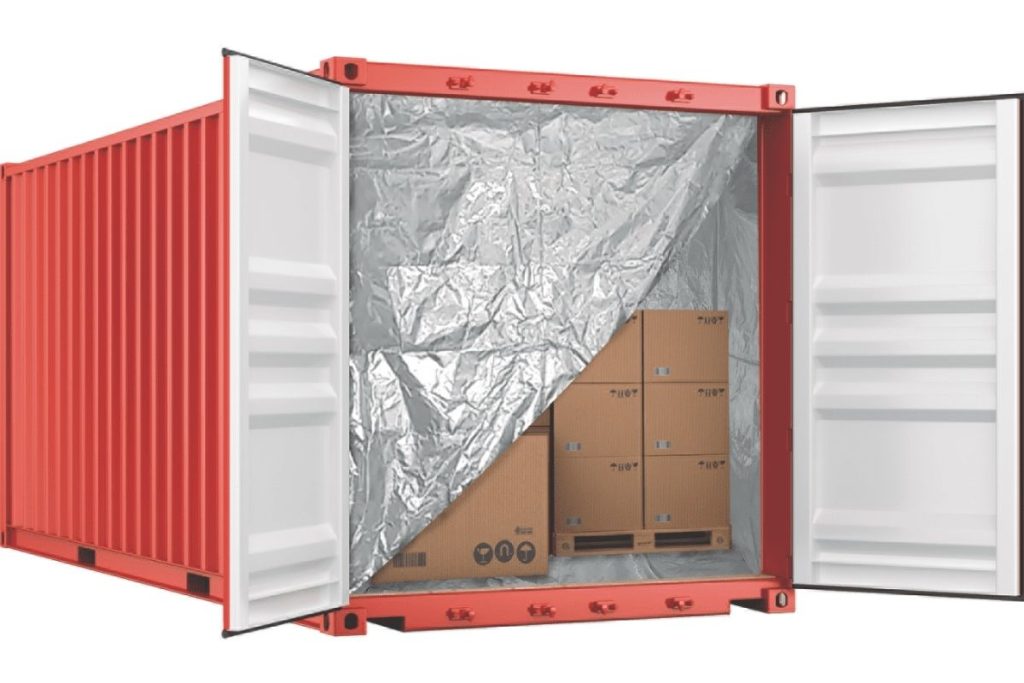
Insulated containers are also called thermal containers. They help keep goods at a stable temperature for a short period. Unlike reefer containers, it doesn’t have an active cooling system. They often use them for short-distance transport or for cargo that needs mild temperature control, such as beverages or dairy products.
8. Double Door Container
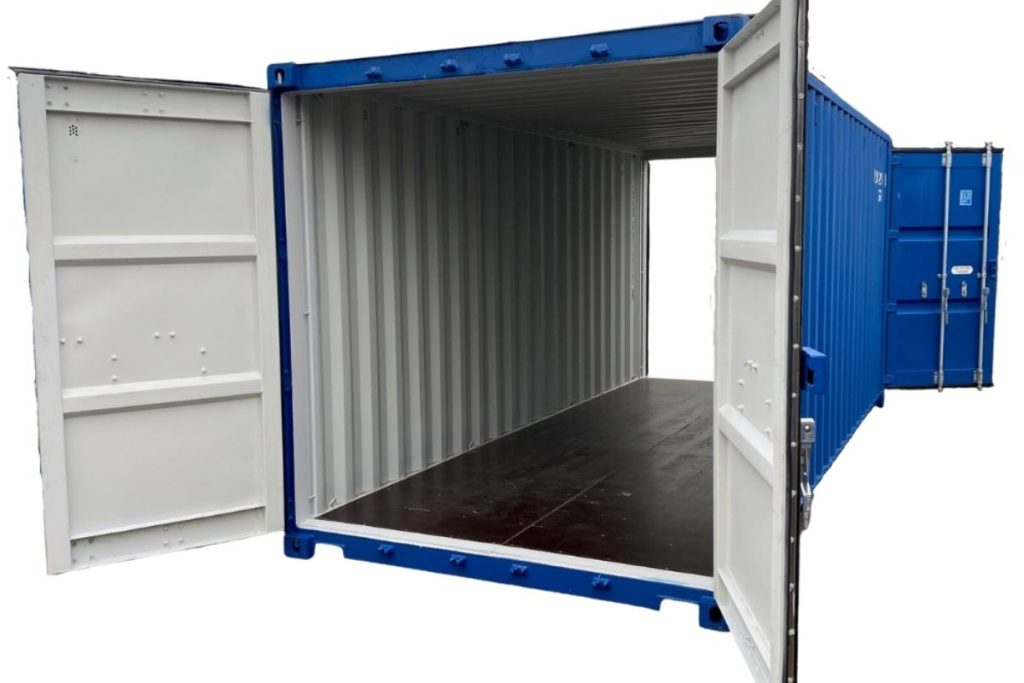
Double-door containers have doors on both ends, making loading and unloading faster and easier. They are also called tunnel containers. Both doors have the same locking system and seals, ensuring full protection.
This container is helpful when goods like pipes, steel bars, or lumber need to be loaded or unloaded from either side. These containers are also convenient for storing goods temporarily at warehouses or job sites.
9. Open Side Container
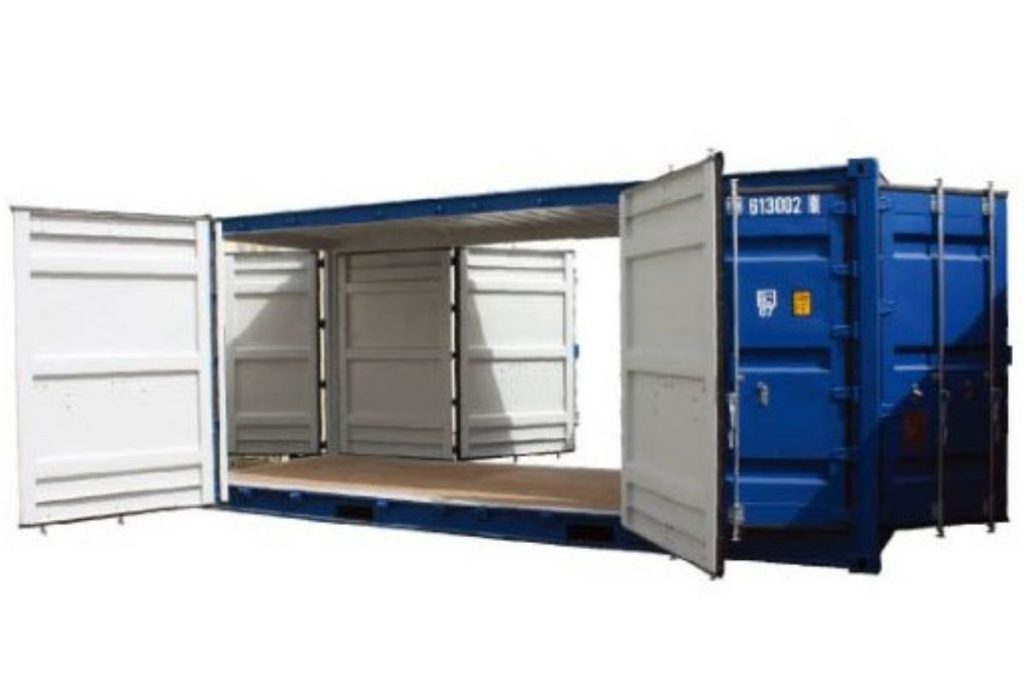
An open-side container has doors on one or both long sides. It provides full side access. People use it to carry cargo that is too wide to fit through standard end doors.
They are also popular in retail, event, and modular construction industries due to their accessibility and versatility.
10. Half-Height Container
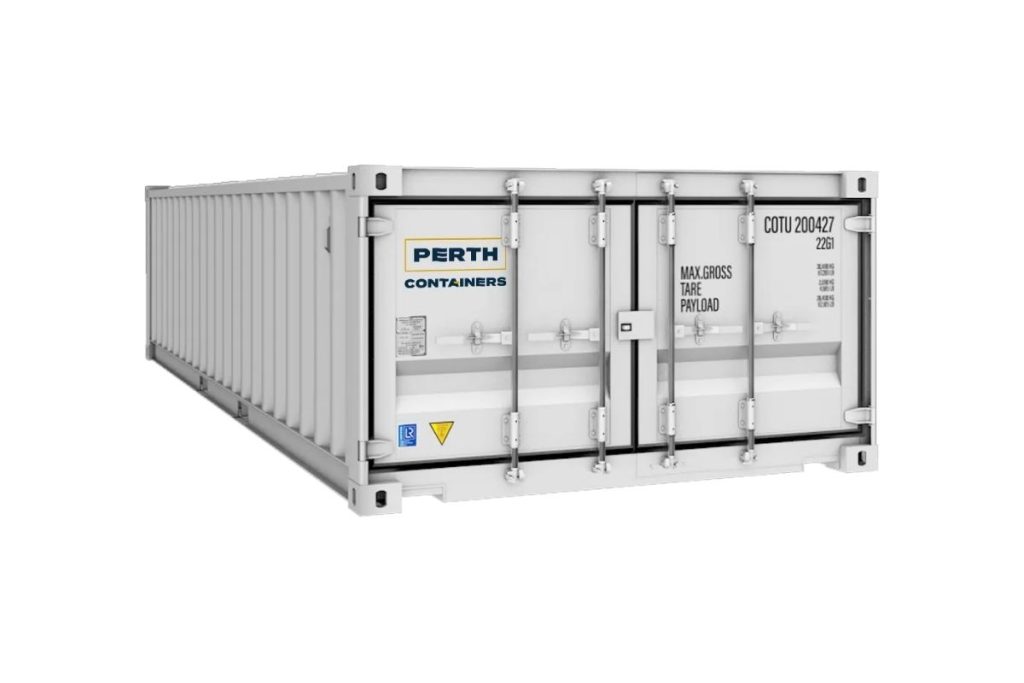
A half-height container is a strong steel container that is half the height of a standard shipping container. A normal container is about 8.6 feet high; a half-height container is roughly 4.3 feet tall. People mainly use these containers to carry heavy, dense, or bulk cargo that does not need the full height of a standard container.
Half-height containers can be open-top or covered with removable tarpaulins, making loading and unloading easier with cranes or tippers. Some models also have doors at one end or both ends, helping to discharge materials quickly.
How Containers Are Chosen for Cargo?
Choosing the right container depends on cargo type, size, weight, and sensitivity. For example:
- Perishable goods → Reefer container
- Liquid cargo → Tank container
- Oversized cargo → Flat rack or open top
- General goods → Dry container
Selecting the right container type improves safety, reduces cost, and ensures that goods reach their destination in perfect condition.
Importance of Container Standardization
The reason container shipping works so smoothly worldwide is standardization. Container standardization made global trade possible. Before containers, people packed and handled cargo piece by piece. It made shipping slow and expensive.
With standard ISO containers, ships, trucks, and trains can all handle the same units. This allows easy intermodal transport, where the container moves directly from one mode of transport to another without unloading the goods.
Standard sizes of containers also simplify storage, stacking, and logistics planning, making trade faster and more reliable. Without standardization, today’s large container terminals would not be able to handle millions of boxes every year.
Final Thought
From barrels and boxes to steel containers, shipping has come a long way. Containers transformed global trade by making it faster, safer, and more organized.
Each container type, whether it’s a dry container, reefer, tank, or flat rack, serves a unique purpose. Together, they help move everything from food and clothing to chemicals and cars across the world’s oceans.
Understanding these container types helps shipping professionals and logistics students make the right choices for cargo transport. As the world continues to trade more, containerization will remain one of the greatest inventions in maritime history.


